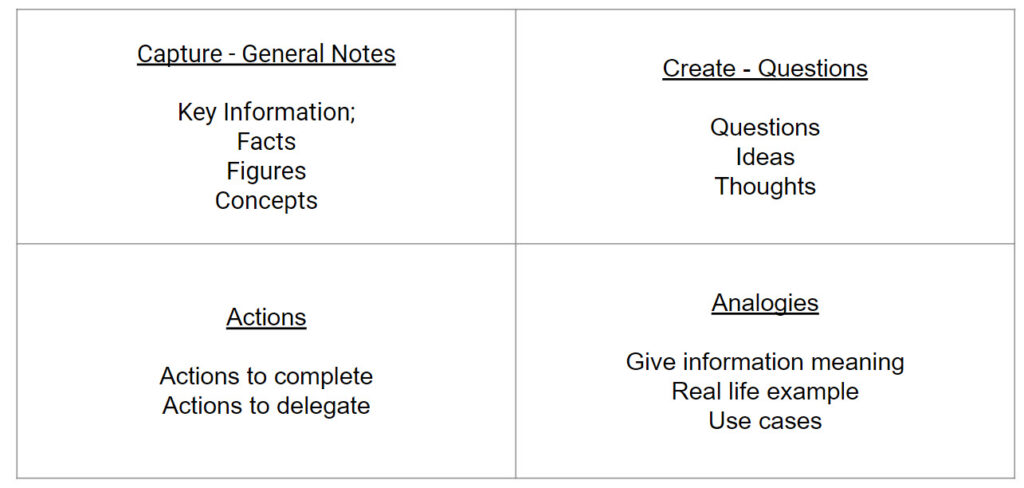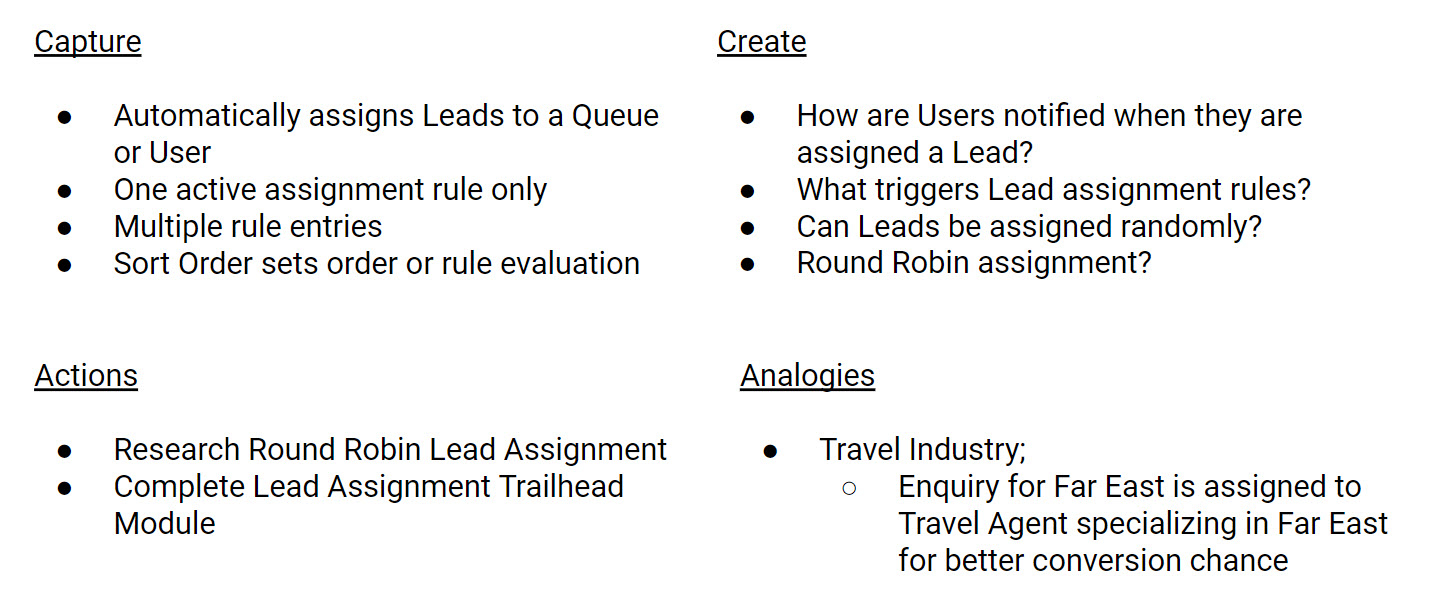How to take effective Salesforce Study Notes

Mastering the art of note-taking can revolutionize your Salesforce studies, making your learning experience both effective and efficient.
The challenge? Most of us haven’t been taught how to take useful notes. Instead, we often resort to jotting down everything that seems important, only to be left with pages of indecipherable notes that are overwhelming to review. Even worse, sometimes we can’t even understand our own notes!
In this post, I’ll walk you through my note-taking method. There is a much more detailed guide in the FREE Salesforce Study Success Course.
What is Note-Taking?
Note-taking is an active process of capturing information from various sources, distilling the key points, and organizing them into a meaningful resource for deeper understanding and future reference. It is not merely transcribing what we see or hear word-for-word. Instead, it’s about summarizing and synthesizing the information in our own words, adding personal insights, and giving it meaning.
Physical Notes vs. Digital Notes
As much as I enjoy using digital tools like Notion, Notes, and Google Docs for gathering information, there’s something special about physically writing with pen on paper. Studies have shown that handwriting engages our brain differently and helps with internalizing information.
Five Principles ofEffective Note-Taking
- Write by hand: Use physical notes for studying and learning. Reserve digital tools for capturing reference materials.
- Use your own words: This aids comprehension and retention. Later on, your notes will be easier to understand because they’re in your words.
- Be selective: Don’t try to record everything. Instead, focus on capturing what you deem important or useful for later.
- Make it interesting: Use colors to highlight key information, actions, insights, and standard information.
- Structure your notes: Break up your notes into sections, including areas for capturing information, recording questions or insights, listing actions, and drawing analogies.
How to Structure Your Notes
Here’s how I structure my notes:
- Top left: General Notes – where I record key information, facts, figures, concepts, etc.
- Top right: Questions, Ideas, Insights – for creating notes in my own words.
- Bottom left: Actions – for things I need to do after the session.
- Bottom right: Analogies – where I make comparisons to familiar concepts, helping me internalize and understand the information.

How to Structure Your Notes
Here’s a simple example using Salesforce Lead Assignment Rules:
- Capture information (Top left): Lead Assignment Rules are used to automatically assign Leads to a Queue or User, only one Active Assignment Rule can be active, multiple entries are allowed, Sort Order dictates the order entries are evaluated.
- Create questions and insights (Top right): How are Users notified of new Leads? What triggers the Lead Assignment rule? Can we assign leads randomly or in a round-robin process?
- List actions (Bottom left): Research round-robin lead assignment or complete the Lead Assignment Module on Trailhead if questions remain unanswered.
- Draw analogies (Bottom right): Compare Lead Assignment Rules to my previous career in Travel – where we specialized in specific areas, and leads were routed to agents who had the best knowledge of the destination.

Learning to take effective notes is a valuable skill that can significantly enhance your learning and retention. As you practice, you’ll become more adept at capturing and synthesizing information. And remember, note-taking is personal – find what works best for you and adjust as needed.
If you are ready to take your Salesforce Studies to the next level join our FREE Salesforce Study Success Course and discover the proven strategies and techniques to make your learning more effective and efficient.







Great insight, I will try this for my next cert!